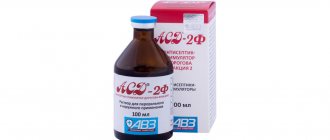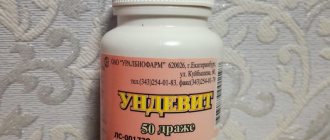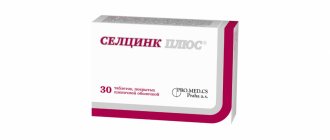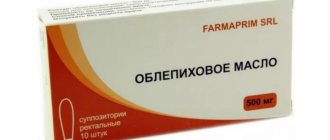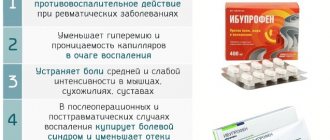Acrylates, ethanol, isopropanol, carbomers... Sounds scary, doesn't it? What role do these and other components play in the sanitizer, and whether they can be dangerous – we will tell you in this article.
About 20% of protective gels and hand liquids are disinfectants registered by Rospotrebnadzor, the effectiveness of which has been tested in the laboratory.
The remaining 80% of the market is occupied by gels and sprays produced by perfume or cosmetic companies with a claimed antimicrobial effect. They are sold in supermarkets, cosmetics and household goods stores, so we will analyze the main components of the composition of products from this category.
First of all, it is worth noting that all the substances listed below are included in the list of ingredients allowed in cosmetics in TR CU 009/2011 “On the safety of perfumery and cosmetic products.” Next we talk about the composition of the antiseptic gel.
Alcohol
The most reliable antiseptic is considered to be made on the basis of alcohol - ethyl, propyl or isopropyl. According to the letter of Rospotrebnadzor dated March 27, 2021 “On carrying out disinfection measures,” gels, sprays and wet wipes related to perfumery and cosmetic products can be used as antiseptic, provided that they contain a sufficient amount of alcohol (at least 70% ethyl and at least 60% isopropyl by weight). As we see, Rospotrebnadzor says nothing about other active ingredients, such as chlorhexidine. In a study by Roskachestvo, products based on it showed some effectiveness (including the ability to kill 99.99% of bacteria on hands), but alcohol sanitizers are still a more reliable option.
This sanitizer component is the most aggressive in the composition. Negative consequences include irritation and a feeling of dry skin.
What alcohol is antiseptic made from: ethyl or isopropyl?
The reduced requirement for the concentration of isopropyl alcohol is associated with the increased toxicity of isopropanol. It is made from propylene, unlike ethanol, which is made from grain. Nevertheless, the director of the Research Institute of Household Chemicals "Rossa" Natalya Divakova
clarifies that, according to GOST 12.1.007-76, both alcohols belong to the lowest hazard class - fourth.
What is the best sanitizer? To do this, pay attention to the chemical composition of the antiseptic. We talk about this in a full study of disinfectants HERE
.
Contraindications and side effects
The antiseptic has no contraindications, with the exception of individual intolerance to one or more components. Side effects are observed very rarely, they are mainly associated with erroneous intake of liquid orally. This is strictly forbidden, since due to the high concentration of alcohol a number of negative consequences occur:
- burn of the gastrointestinal mucosa;
- ulcerative lesions of the gastrointestinal tract;
- mental disorders;
- liver diseases;
- death of brain cellular structures;
- decrease or loss of performance;
- problems with memory and attention;
- problems with potency in men.
Cases of overdose have not been registered to date. External use of the drug in moderate quantities is safe for the skin.
Propylene glycol
This is also alcohol. It is popular in medicine, the food industry, and the cosmetics industry. Since this type of alcohol does not have a clear bactericidal effect, it is not added to antiseptics to combat microbes. It is used as a solvent, allowing the various components of the antiseptic to be mixed together.
For information
There are a large number of varieties of alcohols, differing in their structure and properties. For example, ethanol has pronounced antibacterial properties, and glycerin (this is also an alcohol!) has little effect on microbes, but moisturizes the skin well.
– Propylene glycol is approved for use in most countries of the world, since it does not have a toxic effect, including when ingested. In the food industry, the composition of products is designated as E1520, says Danila Chernyshov
.
Pharmacological properties of the drug
The medicine Aseptolin has a disinfectant and anti-inflammatory effect, helps reduce tissue swelling. It has a destructive effect on both gram-positive and gram-negative bacteria. The presence of an aseptic component such as glyceritan in the preparation increases the protective functions of the skin, protecting it from the harmful effects of the environment by reducing the activity of pathogenic microorganisms.
Constant use of the solution helps to significantly reduce the risk of infection and reduce the impact of any irritation that occurs on the skin.
Aseptolin can also be used as a local irritant, that is, capable of irritating nerve endings.
This is necessary to dilate blood vessels and suppress pain impulses in soft tissues to achieve a “distracting” effect. Before you start using Aseptolin, you should definitely read the instructions: like any medication, it has contraindications and side effects.
Composition and release form
All components of this dosage form are well known to every person, even those far from medicine. Aseptolin contains the following components:
- glycerol;
- ethanol;
- distilled water;
- lingonberry plant extract;
- Glyceritan.
Traditionally, the medicine is produced in the form of a solution, often transparent, sometimes opalescent, yellowish or cherry in color and with a weak specific odor. Aseptolin is packaged in dark glass bottles, which are designed to protect the drug from the destructive effects of sunlight. Bottles with a volume of 25 to 250 ml are stored in cardboard packaging.
You can purchase Aseptolin at any pharmacy, and you do not need a prescription. You can store the medicinal solution in your home medicine cabinet for no longer than two years. After the specified period, the drug must be disposed of.
Glycerol
In antiseptics, glycerin is responsible for the viscous structure, moisturizing and protecting the skin.
In recommendations
WHO on the production of antiseptics explains that glycerin is non-toxic and hypoallergenic.
“Glycerin is used not only in the cosmetics industry, but also in other areas, in particular in the food industry (in the composition it is designated as E422.) It is added to food products as a stabilizer, as well as to give consistency or maintain the level of moisture in the product,” explains Danila Chernyshov
.
Indications for use
This inexpensive aseptic product is produced in two forms: a 90% solution for skin sanitation, and a 70% solution for disinfecting medical instruments and disinfecting various surfaces and premises. The range of applications of this medication is quite wide, but there are certain limitations in use.
Aseptolin should not be used if you are prone to allergies, for treating deep wounds or severe burns, or if you have cancerous tumors!
Skin disinfection using Aseptolin is carried out in the following cases:
- when the top layer of skin (epidermis) is damaged and when skin is transplanted after burns;
- to influence areas infected with streptococcal infection where pathogenic flora multiply;
- for the treatment of postpartum injuries;
- with superficial damage to the perineum or vagina;
- during the formation of mycoses of various etiologies;
- for the treatment of infections caused by venereal diseases;
- for processing future incisions during surgical interventions.
Along with traditional aseptics (solutions of iodine, brilliant green, potassium permanganate, chlorhexidine, etc.), medical professionals are increasingly recommending the use of Aseptolin, the indications for use of which are determined by the treatment of streptoderma, i.e. inflammatory processes on the skin. This drug is effective and easy to use.
Acrylates
Esters or salts of acrylic acid are used as gelling agents and stabilizers, film-forming components and thickeners. The presence of the film additionally protects the skin from pathogens and helps prolong the effect of the antiseptic.
Acrylates are washed off with water, so if after applying the antiseptic you wash your hands after some time, you should not count on the prolonged action of the sanitizer.
“Instead of acrylates, it is also possible to use natural-based products – cellulose, xanthate,” adds Natalya Divakova
.
What is Aseptolin used for?
The main indications for the use of antiseptics are:
- vaginal wounds, damage to the mucous membrane;
- ulcers as a result of complications after childbirth;
- postpartum infections;
- prevention of inflammation during and after surgery;
- treatment of the area where the operation is performed;
- hand treatment for doctors and nurses;
- burn lesions (preparation for dermatoplasty surgery);
- treatment of the skin before transplant surgery;
- mycosis (fungal infection) of the foot;
- pyoderia;
- candidiasis;
- pyoderma.
Instructions for use
Due to their wide spectrum of action, Aseptolin and Aseptolin-Plus are in demand among patients. The rules for using these medications are simple:
- The aseptic agent is used only for external use. The medicine is applied, if necessary, to the affected areas with a cotton swab or bandage (gauze). The amount of medicine that needs to be applied is determined experimentally, but too much of the solution dries out the skin, which can subsequently cause a burn.
- Before injecting intravenously or intramuscularly, you need to wipe the skin twice with a sterile swab soaked in a 90% Aseptolin solution.
- Small incision sites are treated twice with a 10-minute break to prevent the development of a purulent infection.
- It is forbidden to apply a disinfectant solution to open wounds or treat the mucous membrane of the nose, mouth, and eyes with it.
- If the medicine gets into your eyes, you need to rinse them for quite some time with cold running water.
- A 70% solution of the drug is used to treat surgical instruments and other medical equipment.
There are no experimental data, but Aseptolin is not recommended for use in children. A high concentration is likely to cause severe irritation on children’s delicate skin, and if you reduce the concentration by diluting the solution with water, it may lose its protective properties.
Why Aseptolin cannot be taken orally
The instructions for the medication clearly indicate that this medicine is more harmful when taken orally. Oral intake leads to severe burns of the esophagus, larynx and even the stomach.
The most dangerous is the 90% Aseptolin solution, which contains too much alcohol.
If you dilute the medicine to drink it like vodka, the consequences will not be as severe. There are people who drink diluted Aseptolin, since its cost is significantly lower than alcoholic beverages from the store. However, constant consumption of such a “drink” can lead to the following complications:
- chronic gastritis;
- stomach ulcer;
- various liver diseases, including cirrhosis and cancer;
- erectile disfunction;
- destruction of brain cells;
- disturbance of mental activity;
- psychological dependence.
Even a single use of this medication orally can cause severe poisoning, so you must strictly adhere to the instructions for use, using the drug only for its intended purpose.
Analogues of the drug
Of course, it is better not to independently replace the drug prescribed by your doctor. But if Aseptolin is not available in pharmacies, you can use one of the analogues presented here. The active substance in these dosage forms is different, but they have a similar aseptic effect on human skin.
| A drug | Active substance | Manufacturer | Price (in rubles) |
| Bactoderm | Benzalkonium chloride and chlorhexidine | Russia | from 200 |
| Vinylin | Polivinox | Russia | from 131 |
| Dioxidine | Hydroxymethylquinoxyline dioxide | Russia | from 48 |
| Octenisept | Octenidine, phenoxyethanol | Germany | from 500 |
All of the listed analogues are sold in Russian pharmacies, and can also be ordered online. Imported analogues cost tens of times more, but those who trust foreign pharmacology more can successfully order drugs from the Netherlands, Great Britain, and Sweden - recognized leaders in the drug market.


